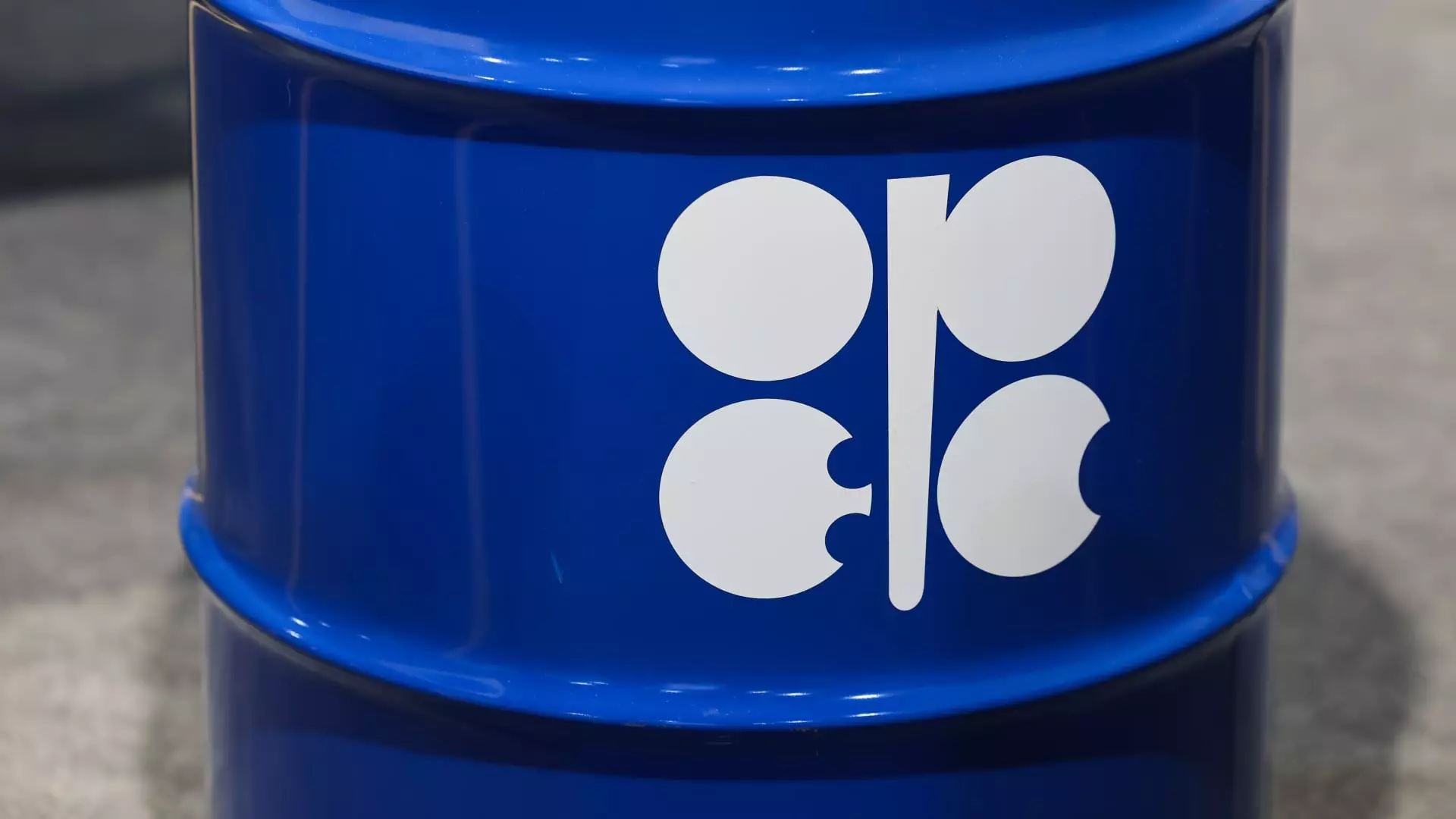In a high-stakes maneuver, OPEC+ has defiantly escalated its oil production by 411,000 barrels per day for July—a significant strategic decision designed to reclaim market share. This action serves not only as a direct response to overproducing allies like Iraq and Kazakhstan but also as a calculated gamble to reshape the dynamics of the global oil market. For years, OPEC+ has restrained production, cutting more than 5 million barrels per day to stabilize prices and prevent a catastrophic market free-fall. However, the group’s recent intensification in output raises important questions about its long-term economic viability and the potential ramifications for oil-dependent economies worldwide.
The Price Pendulum: Falling Expectations
On the back of these production increases, the market’s response has been tepid at best. U.S. crude futures plummeted in value on the day prior, as anxiety regarding an open spigot of oil from OPEC+ loomed large over traders. Prices for both Brent and West Texas Intermediate crude fell sharply, defying expectations for a market recovery. The narrative here is grim: OPEC’s commitment to increasing output ignores the basic economics of supply and demand. Analysts are quick to note that with prices already in a precarious position, the decision to ramp up production could potentially prolong a downward spiral that not only affects OPEC+ countries but also hammers U.S. shale producers who are already under significant financial pressure.
Leadership Dynamics: Saudi Arabia and Russia
The leadership dynamics within OPEC+ are telling. Saudi Arabia and Russia, two of the group’s most influential members, are determined to hold the reins as they maneuver this treacherous landscape. Their ambition to punish over-producing nations while reclaiming their own market share raises ethical questions. How far should oil giants go to impose their will on the market, even if it results in price drops that affect millions, from producers to consumers? This aggressive posture places them in a position where they must balance their economic ambitions against the broader impacts of their decisions, which are increasingly being scrutinized by stakeholders from various sectors.
Market Share over Stability: A Risky Bet
Harry Tchilinguirian’s remarks that “market share is on top of the agenda” encapsulate the current OPEC+ ethos: the relentless pursuit of revenue through volume, even at the cost of price stability. It is a dangerous philosophy. In a world grappling with climate change and rising consumer expectations for sustainable practices, pursuing increased production at such a rate indicates a disregard for future consequences. The so-called healthy market fundamentals offered by OPEC+, such as declining oil inventories, are not enough to mitigate the risk of long-term detriment as we inch closer to a global energy transition.
The Pressure on Rivals: U.S. Shale Producers
The expanded output isn’t merely an OPEC+ affair; it has profound implications for competitors, most notably U.S. shale oil producers. Analysts observe that the increased supply from OPEC+ puts significant pressure on these American firms, challenging their ability to compete in an already volatile marketplace. As the U.S. shakes off its formerly insulated energy independence, it now finds itself vulnerable to the capricious nature of foreign oil cartels. This pressure risks not only marginalizing U.S. shale but potentially leading to job losses and economic distress in regions heavily reliant on the oil industry.
The Cry for Restraint: Voices of Caution
Interestingly, among this flurry of aggressive posturing, there emerges a contrary voice from Algeria, which has expressed concerns about the continual output hikes. This plea for restraint reflects an understanding that the oil market is multi-faceted, where stability often trumps aggressive growth. The clash between different OPEC+ interests underscores the disarray that can arise when countries prioritize their individual economic interests over collective responsibility. As Algeria raises its cautionary flag, it shines a light on the internal struggles within OPEC+, revealing the complexities of alliance politics in an era defined by change and uncertainty.
In these tumultuous times, OPEC+’s choices could reverberate far beyond boardrooms and trading floors—transforming lives and economies in unpredictable ways. As the world watches this high-octane drama unfold, the critical question remains: can OPEC+ balance its hunger for market share with the realities of a shifting global landscape?

